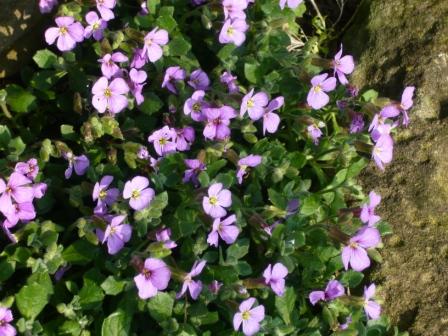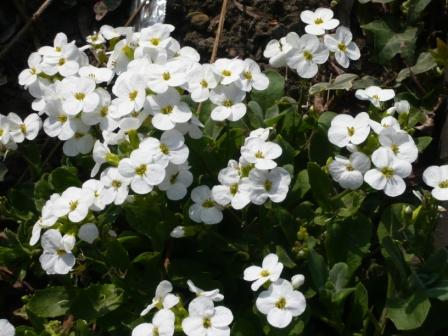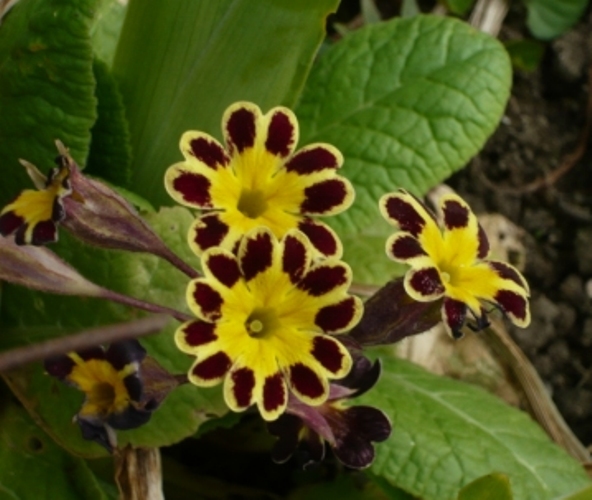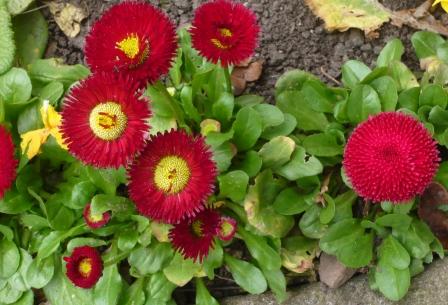Top Rockery Plants for Growin In UK
Rockery plants look very good in spring as they trail over rocks and edges in the garden. The rockery mimics natural conditions for these alpine dwellers often with limestone rocks or fast draining poor soil.
Top Rockery Plants for Beginners
- Arabis shown above is also known as snow-in-summer and has showers of white flowers. The plant is robust and useful for covering rough stoney ground. Some species need a bit more care but are useful in the rockery including Arabis rosa a pink form and arabis bryoides that forms a small mat of hairl leaved rosetts.
- Aubrieta or Aubrietia are neat low growing prostrate plants with purple or mauve flowers. They can be grown from seed or cuttings taken in late spring. After flowering they should be cut well back to encourage compact plants. Variegated leaf forms are called A. Aurea or A. Argenta and there are some good distinctive natural forms such as Aubrieta Mrs Rodewald, Gurgedyke, Bridesmaid and Barker’s Double
- Saxifraga has numerous species, about 300, all suitable for the rock garden. The matt forming Aizoon Saxifrages have sprays of flowers whilst Englerias and Kabschias form rosetts of stiffer pointed leaves usually with pink or yellow flowers. You could create your own special collection if this species interests you. They are so easy to grow forget the names and just enjoy the plants.
- Campanula is another family with many species and varieties but small harebells are a delight in the rockery. The blue bell shaped flowers are very floriferous and flower as the spring alpines are finishing. They will stand shade and like water when in flower through summer.
- The majority of Dianthus species are suitable for the rockery. Compact, low growing cushions of evergreen foliage produce welcome colour in June. They grow easily from seed or cuttings and I recommend Dianthus alpinus with deep rose to white flowers, Dianthus deltoides the Maiden Pink and for a larger plant D.carthusianorum the typical but gawky pink although there is a red form that I would like to possess.

Some plants that have not made it into my top 5 include:
Gardeners Rockery Tips
- Many plants can be fit into a rockery plan or design feature with rocks.
- Please do not collect plants from the wild as alpine plants are a delicate part of the ecosystem
- I have planted many Dwarf conifers in my various rockeries. They do not grow too rapidly due to poor soil and natural dwarf features yet provide interest and contrast.
- Small bulbs like grape hyacinth and chinodoxa do well.
- I have had numerous failures with Gentians but that may be just me.
See also Rock Gardens in Miniature
Alpine plants are good species for most rockeries. I would suggest you experiment with some o0f the cushion plants or Lewisia. Wet damp winters are a potential problem but you can shelter them with carefully placed rocks or even give them a winter roof with a sheet of glass.


